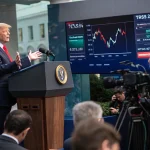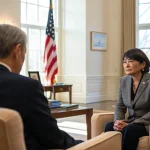Three senior executives from Intel’s manufacturing division are planning to retire as newly appointed CEO Lip-Bu Tan works to implement major changes at the struggling U.S. chipmaker, according to information provided to Reuters.
The departures come at a critical time for Intel, which has faced significant challenges in recent years. Once the dominant force in semiconductor manufacturing, the company has lost ground to competitors and struggled with production delays and technological setbacks.
Leadership Transition Amid Turnaround Efforts
The retirement of these manufacturing executives signals a significant shift in Intel’s leadership structure as Tan attempts to revitalize the company’s operations. Manufacturing has been a particular pain point for Intel, with the company falling behind rivals in developing and implementing advanced chip production technologies.
Tan, who took over as CEO recently, appears to be wasting no time in reshaping the company’s executive team. The manufacturing division is likely to be a key focus of his turnaround strategy, given its central importance to Intel’s business model and its recent struggles.
Challenges Facing Intel
Intel has faced multiple challenges in recent years that have eroded its once-dominant position in the semiconductor industry:
- Production delays for new chip technologies
- Growing competition from companies like TSMC and Samsung
- Loss of key customers who have begun designing their own chips
- Market share erosion in both consumer and data center segments
These issues have contributed to financial underperformance and a significant drop in investor confidence. The company’s stock price has reflected these concerns, underperforming compared to many competitors in the semiconductor sector.
New Direction Under Tan’s Leadership
Lip-Bu Tan brings significant industry experience to Intel, having previously served in leadership roles at other technology companies. His appointment was viewed by many analysts as a sign that Intel’s board recognized the need for fresh perspectives and decisive action.
The term “resuscitate” used in communications about these changes suggests the serious nature of Intel’s current situation and the dramatic measures being considered to address it. Tan appears to be implementing what Intel describes as “sweeping change” – language that indicates a comprehensive overhaul rather than incremental adjustments.
Industry analysts will be watching closely to see who replaces the departing executives and what strategic shifts might accompany these leadership changes. The manufacturing division is particularly crucial as Intel has committed to regaining technological leadership in chip production.
These executive departures may also signal potential changes to Intel’s manufacturing strategy, which has been the subject of intense debate. Some investors have pushed for Intel to consider more outsourcing of production, while others maintain that in-house manufacturing remains a potential competitive advantage if properly executed.
As the semiconductor industry continues to evolve rapidly, Intel’s ability to adapt under new leadership will be crucial to its future prospects. The retirement of these senior manufacturing executives represents one of the first visible signs of the transformation Tan intends to implement at the struggling chipmaker.









